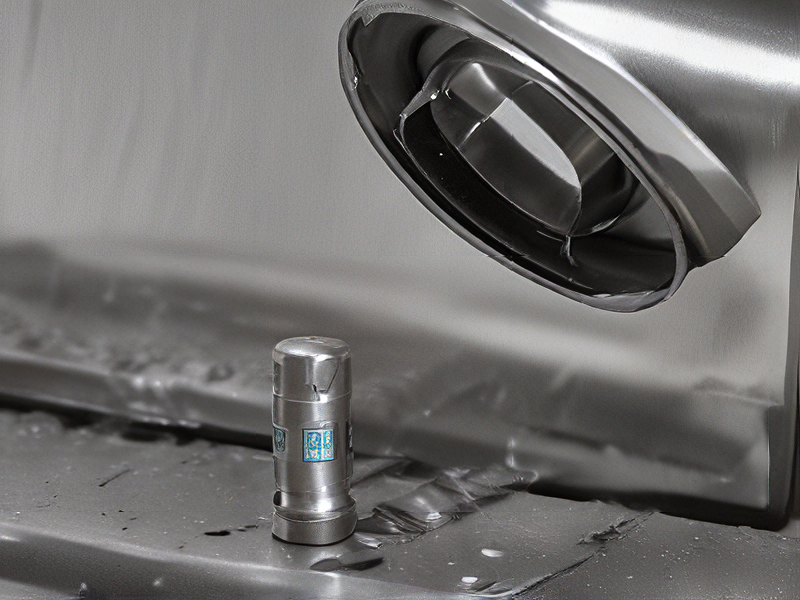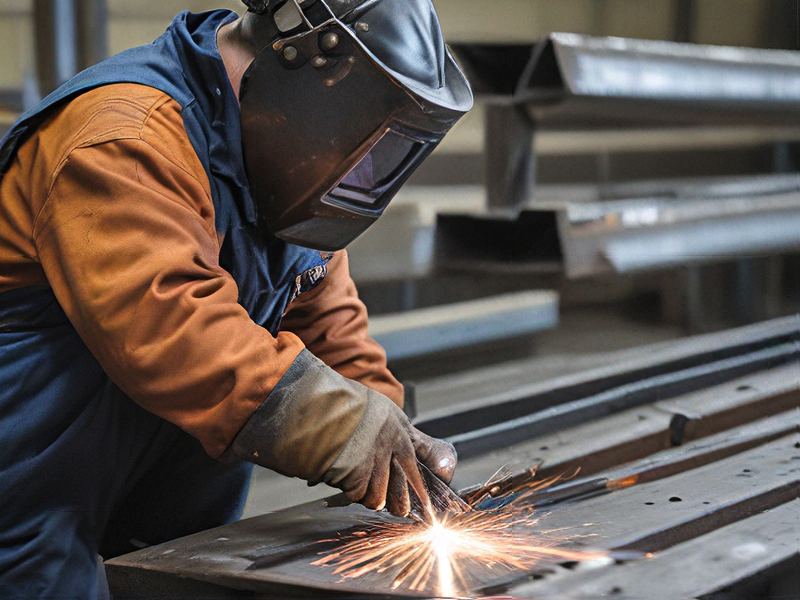Technology and Applications of welding to stainless steel
Welding stainless steel requires specialized techniques and technology due to its unique properties. Stainless steel is known for its corrosion resistance, strength, and aesthetic appeal, but these same properties can make welding challenging.
Techniques:
1. TIG (Tungsten Inert Gas) Welding: Ideal for precision welding of thin stainless steel, offering high-quality, clean welds. The non-consumable tungsten electrode provides excellent control.
2. MIG (Metal Inert Gas) Welding: Suitable for thicker sections of stainless steel. It uses a consumable wire electrode and is faster than TIG welding, though it may produce more spatter.
3. Stick Welding (Shielded Metal Arc Welding – SMAW): Common for outdoor or on-site welding. It’s versatile but can be less precise compared to TIG or MIG.
4. Plasma Arc Welding: Similar to TIG but uses a smaller, more focused arc, allowing for very fine, precise welds. It’s used in industries requiring high-quality welds.
Technology:
– Advanced Power Sources: Modern welding machines provide precise control over the welding parameters, essential for stainless steel to avoid issues like warping and carbide precipitation.
– Inert Gas Supply Systems: These systems provide the necessary shielding gases (like argon or helium) to prevent oxidation during welding.
– Heat Control: Technologies such as pulse welding help manage heat input, crucial for maintaining the integrity of stainless steel.
Applications:
– Automotive Industry: Used in exhaust systems, catalytic converters, and structural components due to its durability and resistance to high temperatures.
– Aerospace: Stainless steel’s strength and resistance to corrosion make it suitable for aircraft components and structures.
– Food and Beverage Processing: Its non-reactive surface is ideal for handling food and beverages, used in equipment like tanks, piping, and containers.
– Medical Devices: Utilized in surgical instruments, implants, and hospital equipment due to its hygienic properties and resistance to sterilization processes.
In summary, welding stainless steel combines advanced techniques and technology to harness its beneficial properties, enabling its use in diverse and demanding applications.

Quality Testing Methods for welding to stainless steel and how to control quality
Quality testing for welding to stainless steel involves several methods to ensure the integrity and durability of the welds:
1. Visual Inspection: The first line of defense, looking for visible defects like cracks, porosity, and improper weld profiles. Use tools like magnifying glasses or borescopes for a detailed view.
2. Dye Penetrant Inspection (DPI): A liquid dye is applied to the weld, which penetrates surface cracks. Excess dye is removed, and a developer is applied, highlighting any defects.
3. Ultrasonic Testing (UT): High-frequency sound waves are transmitted through the weld. Discontinuities in the weld reflect these waves back, revealing internal defects.
4. Radiographic Testing (RT): X-rays or gamma rays are used to create an image of the weld. Defects like porosity, slag inclusions, and cracks appear as dark spots on the film.
5. Magnetic Particle Inspection (MPI): For ferromagnetic stainless steels, a magnetic field is applied, and iron particles are spread over the weld. Surface and slightly subsurface defects disrupt the magnetic field, attracting particles and indicating flaws.
6. Eddy Current Testing (ECT): An electromagnetic coil induces currents in the weld. Flaws disturb these currents, which are detected by measuring changes in the impedance of the coil.
To control quality in welding to stainless steel:
1. Proper Welding Procedures: Develop and follow strict welding procedures specifying parameters like heat input, travel speed, and electrode type.
2. Pre-Weld and Post-Weld Cleaning: Ensure surfaces are clean before welding and remove any contaminants post-welding to prevent corrosion.
3. Welders’ Certification: Use certified welders trained specifically for stainless steel welding.
4. Regular Maintenance of Equipment: Ensure welding equipment is well-maintained to provide consistent performance.
5. Environmental Control: Control the welding environment to avoid contamination and oxidation, often using inert gas shielding.
6. Documentation and Traceability: Keep detailed records of welding parameters, materials used, and inspection results to trace any issues back to their source.
By applying these methods and controls, high-quality welds on stainless steel can be achieved consistently.

Tips for Procurement and Considerations when Purchasing from welding to stainless steel
Tips for Procurement
1. Define Requirements Clearly: Specify the type of welding (MIG, TIG, etc.) and stainless steel grades (304, 316, etc.) needed to ensure you get the right materials and equipment.
2. Supplier Evaluation: Choose reputable suppliers with a history of delivering high-quality welding equipment and stainless steel. Check reviews and request references.
3. Quality Assurance: Ensure suppliers provide certification for the stainless steel grades and welding equipment, verifying compliance with industry standards.
4. Bulk Purchasing: Consider bulk buying for cost savings, but ensure storage conditions for stainless steel to prevent corrosion.
5. Lead Time and Inventory Management: Plan procurement well in advance, considering lead times. Maintain a balance between stock availability and storage costs.
Considerations when Purchasing
1. Material Compatibility: Ensure the welding equipment and techniques are compatible with the specific stainless steel grades you need.
2. Cost vs. Quality: Balance cost with quality. Lower prices might lead to inferior materials, which could impact the durability and performance of the final product.
3. Supplier Reliability: Evaluate the supplier’s reliability in terms of delivery times, after-sales support, and responsiveness to issues.
4. Technical Support: Opt for suppliers who offer technical support and training for welding equipment to ensure proper usage and maintenance.
5. Environmental Factors: Consider the operating environment. For instance, certain stainless steel grades offer better corrosion resistance in harsh environments.
6. Compliance and Standards: Ensure all products meet relevant industry standards and regulations, such as ASTM for stainless steel and ISO for welding equipment.
7. Warranty and After-Sales Service: Choose suppliers who offer comprehensive warranties and responsive after-sales service to address any potential issues promptly.
By focusing on these procurement tips and considerations, you can ensure a successful acquisition of welding equipment and stainless steel that meets your project requirements and budget constraints.

FAQs on Sourcing and Manufacturing from welding to stainless steel in China
FAQs on Sourcing and Manufacturing Welding and Stainless Steel in China
1. Why source welding and stainless steel products from China?
China is a global leader in manufacturing, offering competitive pricing, high production capacity, and a wide range of products. Many Chinese manufacturers have advanced technology and expertise in welding and stainless steel production.
2. How do I find reliable suppliers?
Use platforms like Alibaba, Global Sources, and Made-in-China. Verify suppliers through on-site visits, third-party inspections, and by requesting references from previous clients. Checking certifications such as ISO and reviews can also help.
3. What are the key factors to consider when selecting a supplier?
Consider product quality, production capacity, delivery times, communication skills, and compliance with international standards. Price should not be the only factor; reliability and quality assurance are crucial.
4. What are common certifications for welding and stainless steel products?
Look for ISO 9001 (quality management), ISO 14001 (environmental management), and ISO 3834 (welding quality requirements). For stainless steel, certifications like ASTM (American Society for Testing and Materials) and AISI (American Iron and Steel Institute) are important.
5. How can I ensure product quality?
Conduct regular inspections during production, either personally or through third-party agencies. Request sample products before placing large orders and set clear quality standards in your contract.
6. What are the shipping options and considerations?
Common shipping methods include sea freight, air freight, and courier services. Sea freight is cost-effective for large volumes but slower. Ensure your supplier handles proper packaging to avoid damage during transit.
7. How do I handle intellectual property (IP) concerns?
Work with suppliers who have a good reputation and enforce non-disclosure agreements (NDAs) and intellectual property clauses in your contracts. Consider registering your IP in China for additional protection.
8. What are the payment terms typically offered by Chinese suppliers?
Common terms include 30% deposit before production and 70% balance before shipment. Some suppliers may offer more flexible terms as relationships develop.
9. How can I manage communication barriers?
Maintain clear, written communication and use translation services if necessary. Establish regular check-ins and updates to monitor progress and address any issues promptly.
10. What should I do if there are issues with the order?
Have a clear contract that outlines the process for handling disputes. Maintain good records of all communications and transactions. If issues arise, negotiate directly with the supplier or seek mediation through trade organizations or legal channels if necessary.

